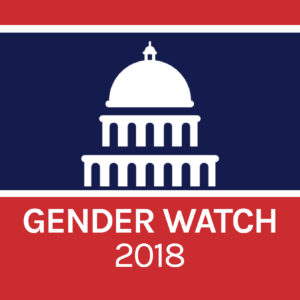Finding the Funny in 2018: Women Candidates and Campaign Ads
 From March to December 2018, the Barbara Lee Family Foundation (BLFF) and the Center for American Women and Politics (CAWP) partnered to offer Gender Watch 2018, which tracked, analyzed, and illuminated gender dynamics in the 2018 midterm elections. With the help of expert scholars and practitioners, Gender Watch 2018 furthered public understanding of how gender influences candidate strategy, voter engagement and expectations, media coverage, and electoral outcomes in campaigns. The blog below was written for Gender Watch 2018, as part of our collective effort to raise questions, suggest answers, and complicate popular discussions about gender’s role U.S. elections.
From March to December 2018, the Barbara Lee Family Foundation (BLFF) and the Center for American Women and Politics (CAWP) partnered to offer Gender Watch 2018, which tracked, analyzed, and illuminated gender dynamics in the 2018 midterm elections. With the help of expert scholars and practitioners, Gender Watch 2018 furthered public understanding of how gender influences candidate strategy, voter engagement and expectations, media coverage, and electoral outcomes in campaigns. The blog below was written for Gender Watch 2018, as part of our collective effort to raise questions, suggest answers, and complicate popular discussions about gender’s role U.S. elections.
With the current emphasis on curating an overall digital presence, as well as ads for traditional television spots, candidates in 2018 have more opportunities than ever to create content that connects with voters. This election cycle, we know that voters respond positively when women run as their authentic selves, and we’ve seen women candidates show voters more sides of their personalities than ever, including their sense of humor. Women on both sides of the aisle have released humorous ads this cycle with the hope of gaining voter attention and support, and research from the Barbara Lee Family Foundation (BLFF) supports their thinking that this strategy can work well for women candidates.
“Conventional” wisdom has long suggested that humor doesn’t work as well for women as it does for men, but our research has shown that’s just not the case anymore. In Politics is Personal: Keys to Likeability and Electability for Women, we found that voters like women candidates and officeholders who demonstrate a sense of humor and don’t take themselves too seriously– and that likeability is still a nonnegotiable for women candidates.
When it comes to ads, BLFF’s Change the Channel research found that humor adds an element of the unexpected, which helps voters remember both the ad and the candidate. In Senate candidate Leah Vukmir’s ad, “Flush,” she highlights her main campaign issues while using comedy (discussing her plans to “drain the swamp” with a visual of a burly man plunging a toilet). Humor not only stands out in women’s campaign ads: it makes the candidate more memorable to voters.
BLFF research also finds that humor can be especially useful in negative ads. Voters are more inclined to view and listen to a candidate’s message if delivered in this frame. In fact, voters appreciate humor from a woman in a negative ad. Senate candidate Jacky Rosen’s ad, “Doctor,” is an example of this tactic: one of her ads features a doctor comically diagnosing her opponent as having no spine in order to attack him for flip-flopping on issues under pressure.
However, because women are still held to higher qualification standards than men, they must maintain their credibility. Research shows that while both men and women respond well to humorous ads, they also expect the humor to pivot to a serious message: too much emphasis on humor can backfire. Senate candidate Tammy Baldwin’s “cheesy” ad uses an effective pivot, tying jokes about cheese to her opposition of the FDA’s decision on aging cheese, an issue that affects people in her state of Wisconsin. Even Gretchen Whitmer’s ad reading “mean tweets” about herself circled back to the governor’s race and issues that matter to Michiganders.
So, what does this mean for women candidates? It is effective when women run unapologetically as themselves, and they shouldn’t be afraid to have a laugh.

